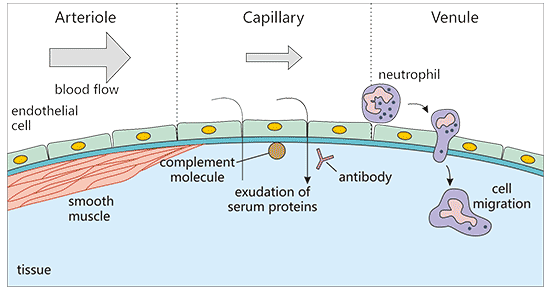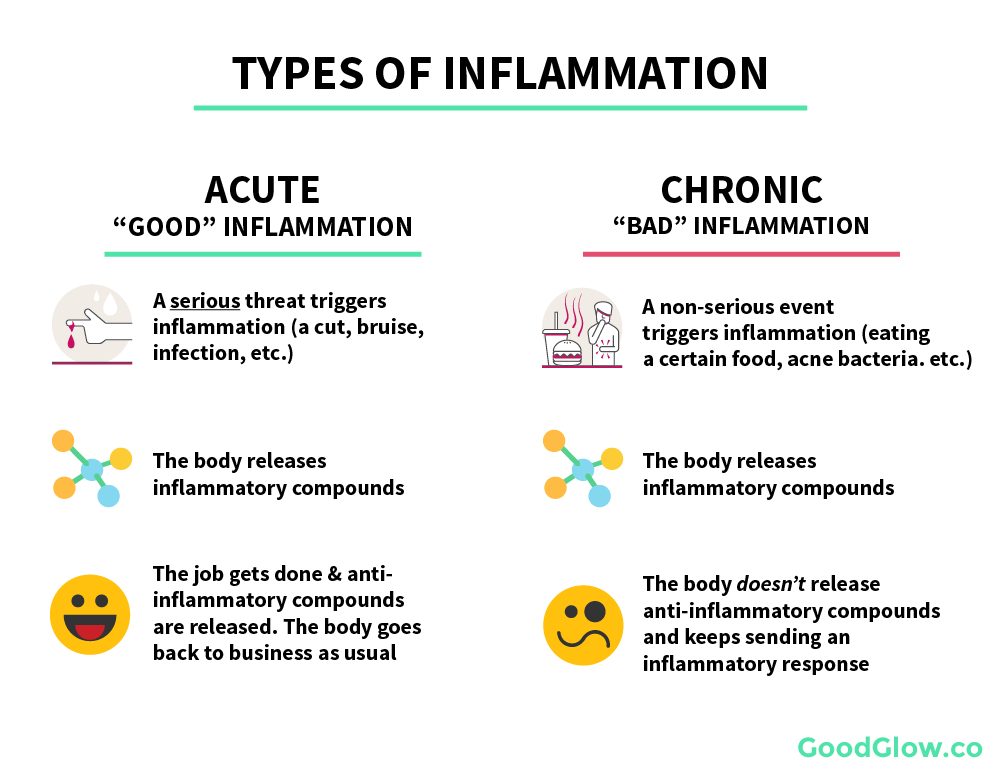Inflammation, a natural defense mechanism of the body, plays a crucial role in protecting against infections and tissue damage. However, when inflammation persists beyond the healing process, it can transition from an acute to a chronic state, leading to a range of health complications. Understanding the distinction between acute and chronic inflammation is essential for recognizing the potential health risks and making informed decisions about treatment and preventive measures.
Acute Inflammation: A Short-Lived Response
Acute inflammation serves as the body’s immediate response to injury, infection, or other harmful stimuli. It is characterized by a rapid influx of white blood cells, specialized immune cells that combat infections and promote healing. This influx of white blood cells triggers a cascade of events, including increased blood flow, fluid leakage, and the release of inflammatory mediators.

Symptoms of Acute Inflammation:
- Redness
- Swelling
- Heat
- Pain
- Loss of function in the affected area
Duration of Acute Inflammation:
Acute inflammation typically resolves within a few days to weeks, as the body heals the damaged tissue and eliminates the initial trigger of inflammation.
Chronic Inflammation: A Persistent Fire
In contrast to acute inflammation’s short-lived nature, chronic inflammation lingers for an extended period, often lasting for months or even years. This prolonged inflammation is characterized by the presence of low levels of inflammatory mediators, which can gradually damage healthy tissues and organs. Chronic inflammation is a hallmark of various chronic diseases, including heart disease, cancer, arthritis, and autoimmune disorders.

Symptoms of Chronic Inflammation:
- Fatigue
- Muscle aches
- Joint pain
- Skin problems
- Digestive issues
Causes of Chronic Inflammation:
- Persistent infections
- Autoimmune diseases
- Chronic stress
- Smoking
- Obesity
- Unhealthy diet
Health Consequences of Chronic Inflammation:
- Increased risk of heart disease
- Increased risk of cancer
- Tissue damage
- Organ dysfunction
Managing Acute and Chronic Inflammation:
While acute inflammation is a natural and often beneficial process, chronic inflammation requires careful management. Treatment approaches for chronic inflammation vary depending on the underlying cause and the specific symptoms. Some common treatment strategies include:
Lifestyle modifications: Maintaining a healthy weight, eating a balanced diet, exercising regularly, and managing stress can significantly reduce chronic inflammation.
Medications: Anti-inflammatory drugs, such as corticosteroids and nonsteroidal anti-inflammatory drugs (NSAIDs), can help suppress inflammation and manage symptoms.
Disease-specific therapies: For chronic diseases associated with inflammation, such as arthritis and autoimmune disorders, targeted therapies are available to address the underlying condition.
Preventing Inflammation:
Adopting a healthy lifestyle is crucial for preventing both acute and chronic inflammation. Key preventive measures include:
Maintaining a healthy weight: Excess body fat can contribute to chronic inflammation.
Eating a balanced and anti-inflammatory diet: A diet rich in fruits, vegetables, and whole grains provides essential nutrients that support the body’s anti-inflammatory mechanisms.
Engaging in regular physical activity: Exercise helps reduce inflammation and promotes overall health.
Managing stress effectively: Chronic stress can trigger and exacerbate inflammation.
Avoiding smoking: Smoking is a major contributor to chronic inflammation.
Conclusion: Navigating the Inflammatory Landscape
Acute and chronic inflammation represent distinct phases of the inflammatory response, each with unique characteristics, causes, and health consequences. Understanding these distinctions is essential for recognizing potential health risks and taking proactive measures to manage inflammation effectively. By adopting a healthy lifestyle, seeking appropriate medical attention, and adhering to recommended treatment plans, individuals can effectively navigate the inflammatory landscape and optimize their overall well-being.